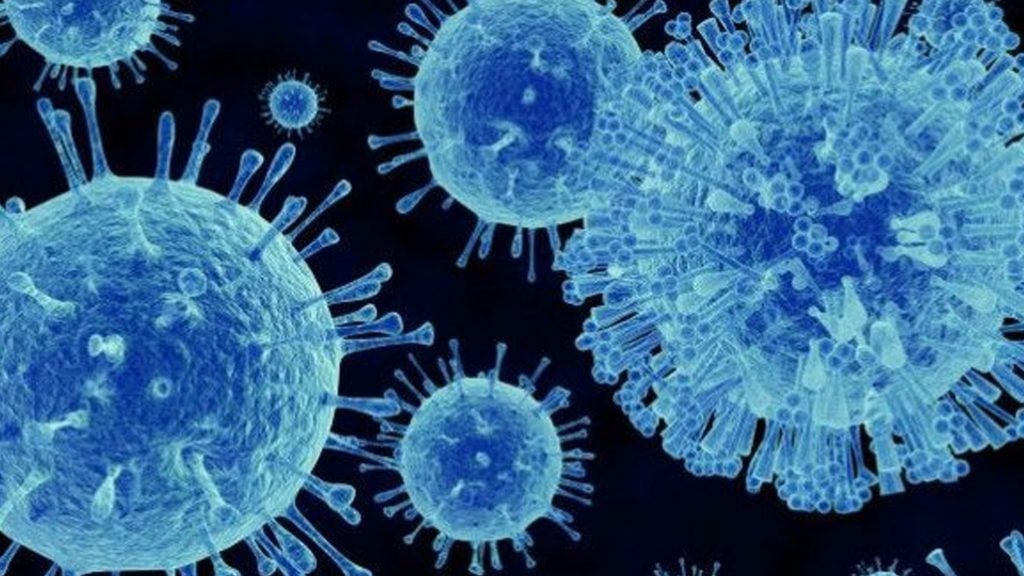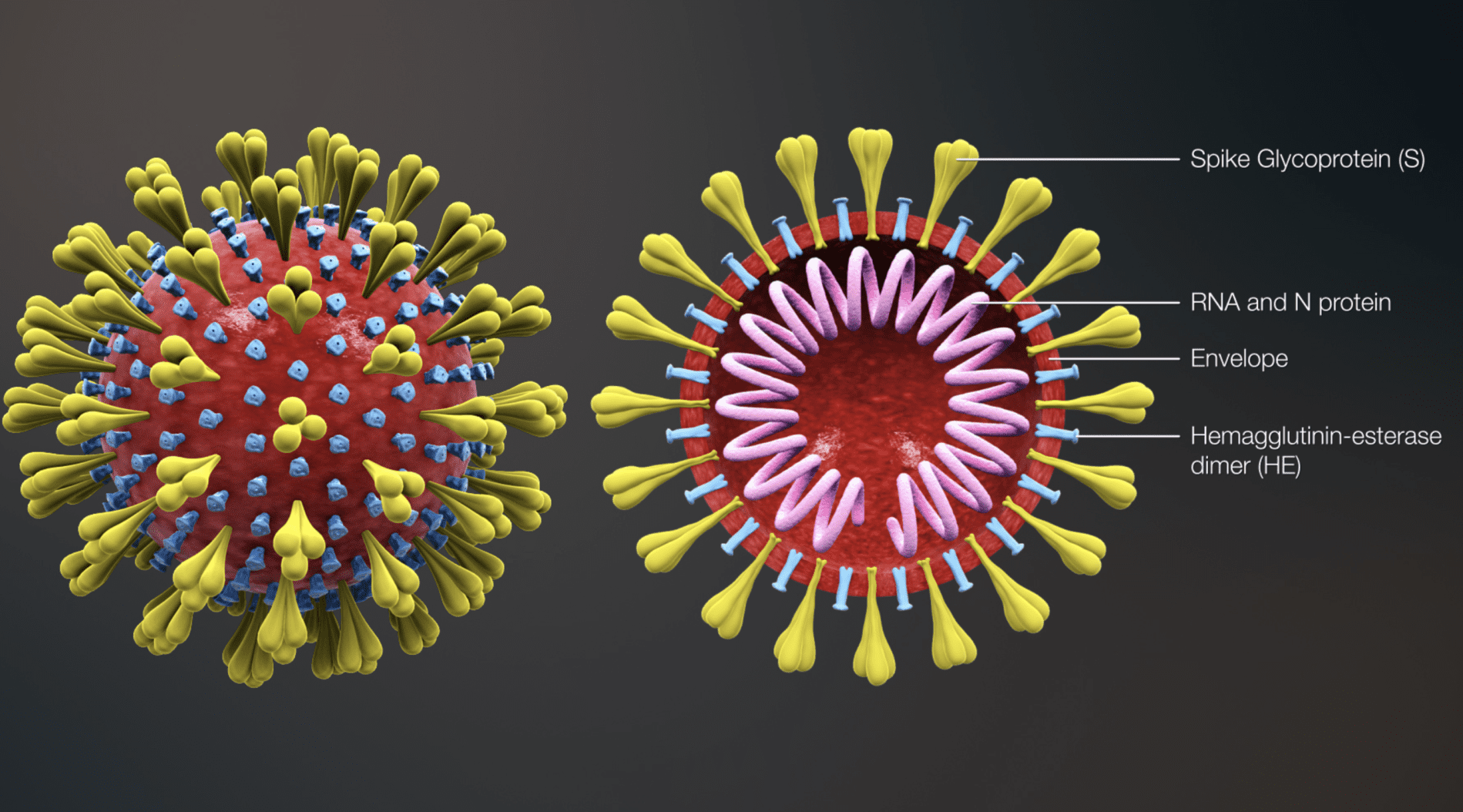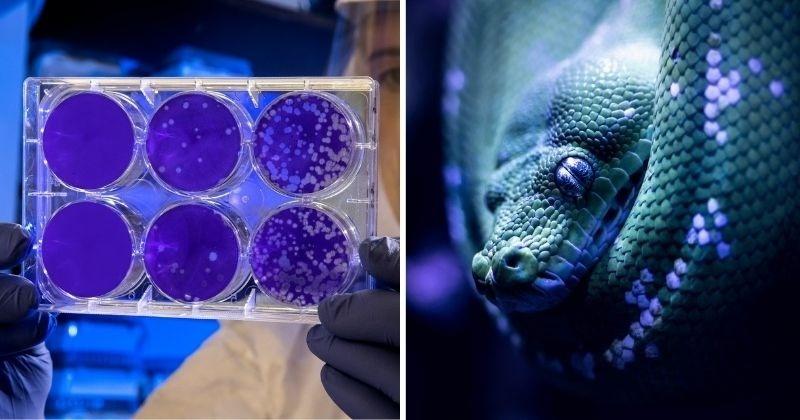From snakes to spike protein to injections; some aspects to consider
Social media has been abuzz with the news of Dr. Bryan Ardis linking snake venom, in particular King Cobra, with Covid. Health Ranger Mike Adams has done a series of podcasts both with Dr. Ardis and their investigations.
Before looking at research done by others, many of us should do a quick search on the internet to see what can be found. As even a brief, and by no means exhaustive, research into this topic has led to a material (below) which relates to some of the scientific research into SARS-CoV-2.

Snake pneumonia, China
In January 2020 Chinese researchers published a paper in the Journal of Medical Virology. The study provided important insights into the potential origins of a recent outbreak of viral pneumonia in China, which started in the middle of December and was spreading to Hong Kong, Singapore, Thailand, and Japan. This outbreak of viral pneumonia, 2019-nCov, later became known as SARS-CoV-2 causing the illness known as Covid-19.
“Our results show that the novel coronavirus sequence obtained from the viral pneumonia outbreak occurring in the city of Wuhan forms a separate group that is highly distinctive to SARS-CoV. Currently, the 2019-nCoV has not been isolated from animal species although it was obtained from one patient,” the study authors wrote, and “suggest that the 2019-nCoV may appear to be a recombinant virus between the bat coronavirus and an origin-unknown coronavirus.”
At the time of the study, 2019-nCoV has caused a total of 217 confirmed cases of pneumonia in China as of 20 January 2020 with new patients also reported in Hong Kong, Thailand, Singapore, South Korea, and Japan.
The study authors performed an evolutionary analysis using 272 genomic sequences of coronaviruses obtained from various geographic locations. By conducting a detailed genetic analysis of the virus and comparing it with available genetic information on different viruses from various geographic locations and host species, the investigators concluded that the 2019-nCoV appeared to be a virus that formed from a combination of a coronavirus found in bats and another coronavirus of unknown origin.
Their analysis suggested that 2019-nCoV had the most similar genetic information with bat coronavirus and has the most similar codon usage bias with snakes, with the closest match to the Taiwanese or Chinese Krait, Bungarus multicinctus:
“The virus codon usage pattern resembles its host to some extent … Squared Euclidean distance between the 2019-nCoV and B. multicinctus [Many-banded or Taiwanese or Chinese krait] is 13.54. The distance between the 2019-nCoV and another snake N. atra [Chinese or Taiwanese cobra] is 16.69. The distance between the 2019-nCoV and Rhinolophus sinicus [horseshoe bat] is 23.46. However, the distance between the 2019-nCoV and other animals is greater than 26, specifically 26.93 for bird, 34.79 for Marmota, 35.36 for human, 36.71 for Manis, and 37.96 for hedgehog. These data suggest that the 2019-nCoV might more effectively use snake’s translation machinery than that of other animals”.
The exchange of genetic information may have occurred between bat-coronaviruses and the origin-unknown isolates, located within the spike glycoprotein that recognizes cell surface receptors.
The missing link could be pangolins, not snakes
In March 2020 researchers from the University of Michigan published a paper in the American Chemical Society:
“We first analysed two recent studies that concluded that snakes are the intermediate hosts of 2019-nCoV and that the 2019-nCoV spike protein insertions share a unique similarity to HIV-1,” the paper’s authors wrote.
They found that, in contrast to the claim that four regions of the spike protein were uniquely shared between SARS-CoV-2 and HIV-1, the four sequence segments could be found in other viruses, including bat coronavirus. After uncovering an error in the analysis that suggested snakes as an intermediate host, the team searched DNA and protein sequences isolated from pangolin tissues for ones similar to SARS-CoV-2. This evidence points to the pangolin as the most likely intermediate host for the new coronavirus, but additional intermediate hosts could be possible, the researchers say.
Extensive research done by Luc Montagnier, Dr. Richard Fleming and others has confirmed that the SARS-CoV-2 spike protein contains genetic material from HIV. In addition, in a paper later published and included in this article, the pangolin hypothesis was debunked. We have to question whether this paper by the University of Michigan was simply a “hit job” to quell dissenting voices and throw “conspiracy theorists” off the track that SARS-CoV-2 was made in a lab.
Evolutionary origins of SARS-CoV-2

Researchers reconstructed the evolutionary history of SARS-CoV-2 and published their findings in Naturein July 2020:
“Coronaviruses have genetic material that is highly recombinant, meaning different regions of the virus’s genome can be derived from multiple sources,” said Maciej Boni, associate professor of biology, at Penn State. “This has made it difficult to reconstruct SARS-CoV-2’s origins. You have to identify all the regions that have been recombining and trace their histories. To do that, we put together a diverse team with expertise in recombination, phylogenetic dating, virus sampling, and molecular and viral evolution.”
The researchers found that the lineage of viruses to which SARS-CoV-2 belongs diverged from other bat viruses about 40-70 years ago. The other key feature thought to be instrumental to SARS-CoV-2’s ability to infect humans – a polybasic cleavage site insertion in the Spike protein – had not yet been seen in another close bat relative of the SARS-CoV-2 virus.
Spike protein attacks vascular system on a cellular level
By May 2021 scientists had known for a while that SARS-CoV-2’s distinctive spike proteins help the virus infect its host by latching on to healthy cells. In collaboration with others, the Salk Institute published a paper on 30 April 2021 in Circulation Research showing that spike proteins also play a key role in the disease itself.
In the study, the researchers from Salk Institute created a “pseudovirus” that was surrounded by SARS-CoV-2 classic crown of spike proteins but did not contain any actual virus. Exposure to this pseudovirus resulted in damage to the lungs and arteries of an animal model – proving that the spike protein alone was enough to cause disease. Tissue samples showed inflammation in endothelial cells lining the pulmonary artery walls.
While the findings themselves weren’t entirely a surprise, the paper provided clear confirmation and a detailed explanation’ of the mechanism through which the protein damages vascular cells for the first time.
Spike protein is highly adapted for humans
Australian scientists using computer modelling to study SARS-CoV-2 discovered the virus is most ideally adapted to infect human cells – rather than bat or pangolin cells, again raising questions of its origin. They published their findings on 24 June 2021 in Nature.
Using genomic data from 12 animal species scientists from Flinders University and La Trobe University painstakingly built computer models of the key ACE2 protein receptors for each species. These models were then used to calculate the strength of binding of the SARS-CoV-2 spike protein to each species’ ACE2 receptor.
The results showed that SARS-CoV-2 bound to ACE2 on human cells more tightly than any of the tested animal species, including bats and pangolins. If one of the animal species tested was the origin, it would normally be expected to show the highest binding to the virus.
“Humans showed the strongest spike binding, consistent with the high susceptibility to the virus, but very surprising if an animal was the initial source of the infection in humans,” says La Trobe University Professor David Winkler.
“While it was incorrectly suggested early in the pandemic by some scientists that they had found SARS-CoV-2 in pangolins, this was due to a misunderstanding and this claim was rapidly retracted as the pangolin coronavirus they described had less than 90% genetic similarity to SARS-CoV-2 and hence could not be its ancestor,” Flinders affiliated Professor Nikolai Petrovsky said. “Overall … our study showed that the COVID-19 virus was very well adapted to infect humans.”
Letter to the FBI
Dr. Tau Braun is a US National Counterterrorism & EMS Advisor and Trainer, Chief Scientist, Counter Bioterrorism Division, BioChem Engineering and Executive Director of the Violence Prevention Agency. He also researched and discovered the origin of Covid 19 was snake venom.

The bulk of the work Dr. Braun does is in the realm of threat assessment and threat management, with the core of his work being training and helping people to analyse and understand a threat. In June 2021 Dr. Braun emailed two departments of the FBI including Assistant Director Don Always, Weapons of Mass Destruction:
“I have been working with scientists and medical professionals since the beginning of the Pandemic to understand the biological mechanisms of SARS2 …
“The Spike Protein has numerous “fingerprints” pointing to a manufactured biological weapon, it can be aerosolized and can easily be deployed as a chemical weapon with devastating short term and long-term impacts.
“SARS2 was rapidly labelled a respiratory disease. However, my research has revealed that the primary destructive mechanism of SARS2 and the S-Protein is an envenomation. I have revealed and alerted the scientists and medical professionals that I have been collaborating with, and I aim to publish my findings within the next few weeks.”
Dr. Braun claims he has proof that snake venom peptides were used to cause the entire Covid “pandemic.” He is known to the FBI having worked with them as an outside consultant but the only response he got from the FBI was “received, thank you.” The FBI, the organisation not the individual agents, has been “badly compromised,” he told Dr. Bryan Ardis in an interview the day after the premiere of ‘Watch the Water’ on The Stew Peters Show.
When Dr. Braun said he would “go public” with his research within a couple of weeks colleagues warned him that he should enter a witness protection programme before he publicly released the information.
“There are government entities involved, but more importantly, you’ve got even more danger, when it comes to corporate entities that have their money in something. You have entities, and personal people, that are willing to kill people to make sure that their criminal enterprise can function,” Dr. Braun said.
Over the past two years, Dr. Braun was able to dissect, understand and work out some of the basic mechanisms of Covid. “This is a serious subject because ultimately this has been a culling. A form of senicide … the bulk of the deaths around the world have been of the aged and the vulnerable,” Dr. Braun said, “this has been a genocide.”
Dr. Braun has pursued to reach out to people and has been, for example, censored by LinkedIn for attempting to bring his information to the attention of professionals who should have been reviewing and considering his research. Dr. Braun is not worried about being censored by LinkedIn but he wants LinkedIn to realise they are “colluding and conspiring in crimes if they bury evidence that’s going to point to how people are getting killed. So, I will probably see LinkedIn in court at some point, or in testimony in congress or the senate because this needs to stop,” he said. Adding that if people are silenced and censored it makes the world an unsafe place.
“In high concentrations, this spike protein acts as nerve gas. You can see that in the videos … why are we calling it a [lab] leak when you can see these are massive clouds or some other form of purposeful attack, just like China said.
“You can use this particular weapon with or without a viral component.”
In a 1977 paper, a lectin – a form of venom, a plant-based venom – was attached to, or combined with, a coronavirus. “You really need to think about glycoproteins, venom and plant-based venom, which are called lectins – you need to think of them like two sides of Velcro and there’s interplay between the two of them. Ultimately, they act as switches and so when your body needs to understand what it’s dealing with it will have places in the body where lectins and venoms combine. And that sets off all kinds of chain reactions,” Dr Braun said.
There are two homologues, synthetic versions of the venom, in the spike protein. “You can call it a cobra venom but it may not actually be from the cobra snake. It is from a lab and even then, more importantly, it doesn’t have to actually come from the cobra snake. That venom could be a perfect match, evolutionary, to a cone snail … it could also come from parasites … There are two venoms that on the S protein of SARS-CoV-2 and they are cobra and krait, a coagulant and an anti-coagulant. And you have all kinds of disruptive mechanisms of those two weapons … the venom aspect is just one aspect of this multipurpose tool that makes up the spike,” Dr. Braun explained.
“There is already loads of data, there is already loads of science, around the fact that the viral component is only one part of this problem. The bigger problem is the spike protein … They took that highly lethal pathogenic short-term and long-term poison, a venom – a venom-based poison – I cannot be any more clear, they took that and they gave you if you took the vaccine, a code. And that code is a trick a cell that would not normally accept that code was told ‘hey suck this code in and start printing more of this poison.”
Click here to watch “The Dr. Ardis Show: The Doctor Who Figured It Out Before Dr. Ardis”, 12 April 2022 (70 mins) (Dr. Braun’s interview).
On the other side of the debate, Dr. Richard Flemming discussed among other aspects the snake venom theory with InfoWars on 14 April (40 mins video).
Snake-like enzyme could be driving Covid deaths

In August 2021 researchers from the University of Arizona published a paper that found a certain enzyme that could be driving Covid deaths:
“We found evidence that there was an enzyme, a snake-like enzyme, in the blood of people who were in extraordinarily high levels,” said Dr. Floyd Chilton, the senior author of the study with the University of Arizona, College of Agriculture and Life Sciences.
You may also read:
- “University of Arizona researchers find link between COVID deaths and snake venom”, 1 September 2021
- “Group IIA secreted phospholipase A2 is associated with the pathobiology leading to COVID-19 mortality”, 24 August 2021
Spike protein binds to heart’s vascular cells
A research team led by Bristol’s Professor Paolo Madeddu exposed human heart pericytes, which are cells that wrap small blood vessels in the heart, to SARS-CoV-2 Alpha and Delta variants, along with the original Wuhan virus. Surprisingly, they found the heart pericytes were not infected.
Researchers challenged the cardiac pericytes with the spike protein alone, without the virus. The spike protein made pericytes unable to interact with their companion endothelial cells and induced them to secrete inflammatory cytokines, suggesting the spike protein is harmful to human cardiac cells.
Finally, the team identified the presence of the SARS-CoV-2 spike protein in blood samples obtained from Covid-19 patients, which opens the possibility that spike protein particles travelling through the circulation can reach a site distant from the respiratory system and cause systemic damage.
Conclusion
The debate regarding snake and other animal venoms and how they are being used are likely to continue for some time. This is the scientific method – open debate – and it is a topic very well worth investigating and debating as our lives may depend on the outcome. We should all remain inquisitive and listen to all sides if we want to find truthful answers.
yogaesoteric
July 15, 2022
Also available in:
 Français
Français
